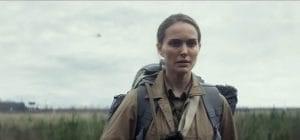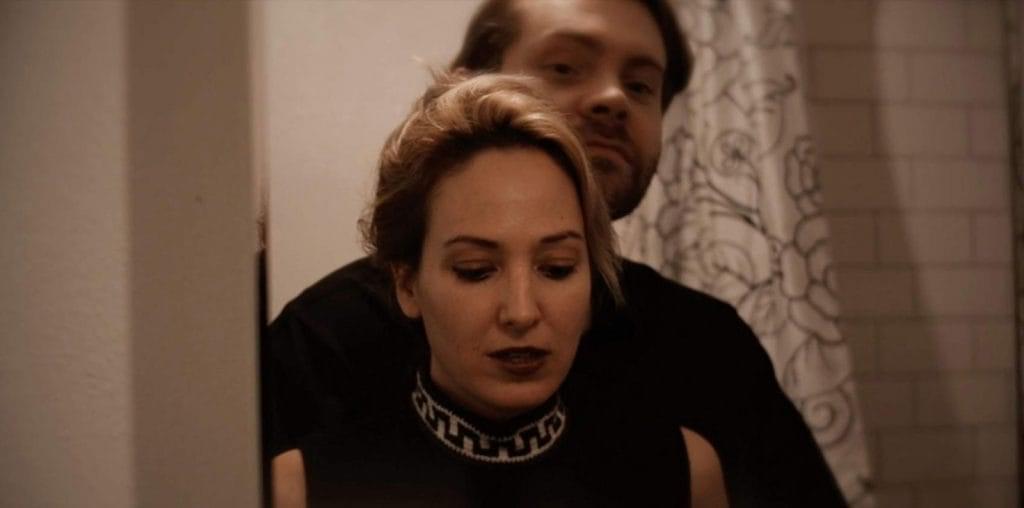
When I caught the trailer for Annihilation, Alex Garland’s (Ex Machina) upcoming eerie sci-fi enterprise starring Natalie Portman, in the theater the audience greeted it with a mix of intrigue and confusion. There were murmurs of “what is that?” and “that looks weird.” People seem not to know what to make of this movie. So, what gins up this uncertainty? Well, Jeff VanderMeer’s book, on which the film is based, knits together strands of weird fiction, hard science fiction, horror and projects it all through the light tunnel from 2001: A Space Odyssey. It’s pretty weird. It’s also moving and disturbing in a way that’s hard to pin down. The following are five stories that (to quote George Lucas) ‘rhyme’ with Annihilation. 
The Colour Out of Space (1927) HP Lovecraft
As with Lovecraft’s other stories The Colour Out of Space sees people tangling with forces that escape comprehension. The narrative takes the form of a second hand account told by a man believed to be insane. He describes how, years past, a meteor struck the land of a farmer named Nahum Gardner. Gardner, and the scientists that came to observe the phenomena, found that the meteorite emitted a color never before seen.
Then the horror began. The color seeped into the ground to enter the dirt and water. Gardner’s crops grew in odd configurations and to monstrous size, but they were inedible. When Gardner’s wife and sons drank from the well, the mysterious color began to affect them as well, driving them mad.
The blend of science and horror makes The Colour Out of Space a uniquely interesting entry in Lovecraft’s catalogue. Annihilation also centers on a phenomena that is allegedly scientific but also weird and disquieting. In fact, the back cover of VanderMeer’s book even name-checks Lovecraft.

Stalker (1979) Andrei Tarkovsky
Stalker explores an area, called simply The Zone, where normal laws of nature do not apply. It is believed that a room that grants wishes lies within The Zone. Special guides called Stalkers lead illegal forays into The Zone.
The ever-cloudy skies and mournful desolation give the movie a beautiful and uncanny quality. The rusted up tracks and decayed buildings that the three main characters traverse echo historical disaster zones like post-war Vienna or post-accident Chernobyl.
As with Annihilation’s Area X (or The Shimmer as the film dubs it) The Zone in Stalker feels more like a living creature than a landscape. In fact, the titular Stalker (Aleksandr Kaydanovsky) tells his companions that, “The Zone wants to be respected. Otherwise it will punish.” In this way, The Zone seems to posses its own wills and wants.
While it’s by no means an action film, Stalker does feature an incredible sequence where the three men entering The Zone navigate alleyways and train tracks in a jeep, evading the soldiers stationed to keep them out. The rest of the film clicks along at a more deliberate pace, but it never dips below enthralling due to its central premise, heady ideas and richly textured design.

Arrival (2016) Denis Villeneuve
One of the best Villeneuve movies, Arrival addresses the technics of what would go down in a first contact scenario. How would they arrive? How would the nations of the world react? And how, if at all, would we be able to communicate with them?
While Arrival is far from the first first-contact story, it finds its unique angle by approaching the story through the prism of language – how it is used and how it molds its users.
Visually, cinematographer Bradford Young favors a muted color pallet of earth browns, olive greens, light grays and inky blacks. It works well coupled with the cerebral script by Eric Heisserer off a short story by Ted Chiang. The early footage from Annihilation creates a similarly restrained tone; but the real comparison between these two stories lies in their protagonists (both experts in their respective fields) who undergo a process that tweaks the core of their being. Most movie protagonists experience change, however, in Arrival and Annihilation the characters evolve in a somewhat more Darwinian sense.

Walden (1854) Henry David Thoreau
Plants. Plants. Plants. I toyed with slotting The Happening on this list (I enjoy it more than most) as well as Alan Moore’s run of Swamp Thing. In the end, I went with Walden because it puts forth a delicate, detailed chronicle of a natural place. VanderMeer does a similar thing with his mapping of Area X’s contours. Overall, Thoreau’s writing makes Walden a read worth undertaking. Here’s an excerpt:
“Who knows what beautiful and winged life, whose egg has been buried for ages under many concentric layers of woodenness in the dead dry life of society, deposited at the first in the alburnum of the green and living tree, which has been gradually converted into the semblance of its well-seasoned tomb, – heard perchance gnawing out now for years by the astonished family of man, as they sat round the festive board, – may unexpectedly come forth from amidst society’s most trivial and handselled furniture, to enjoy its perfect summer life at last!”
Yes, that was all one sentence.

Black Orchid (1988) Neil Gaiman & Dave McKean
Written by Neil Gaiman and illustrated fantastically by Dave McKean, Black Orchid reinvents the DC superhero that first appeared in Adventure Comics in 1973 – until this run Black Orchid was characterized by her conspicuous lack of origin.
Gaimen makes the character a hybrid between human and plant. The human part of her comes from a woman named Susan Linden who was killed by her abusive husband. A botanist brings Susan back by crossing her DNA with that of a plant. In her hybridized form Black Orchid possesses an array of super powers (strength, flight and preternatural healing) but her most commonly utilized ability is that of disguise.
While she does become a type of crime fighter, Black Orchid’s story remains intimate from start to finish as she confronts Susan’s husband/killer. She also has a complicated relationship with the botanist who made her; he created her out of his long-lasting love for the original Susan, but Black Orchid is not Susan. Or is she? Did her metamorphosis turn her into something wholly other?
The collage and bleeding watercolor aesthetic of Mckean’s art matches the story’s blend of superhero mythology, tragic romance, fantasy and science fiction. He mixes stark black and white panels with streaks of vivid color. Other times, he paints beautiful splash pages in watercolor.
Oh, and if you need a little more convincing to check this out, Batman, Poison Ivy and Swamp thing all make an appearance!


Having read the trilogy, I was very skeptical that it would (maybe even could…) be given a successful big-screen treatment, given how much damage has been done throughout Hollywood history to unusual (and even “usual”) source material. I am very very pleased that the story has more than passing resemblance to the original.
My personal theory is that “peak TV” is forcing hollywood to use (and respect) such quality source material… and accept that audiences are OK with real characters, tension, drama, fear, ambiguity, and the like. I very much look forward to seeing it!